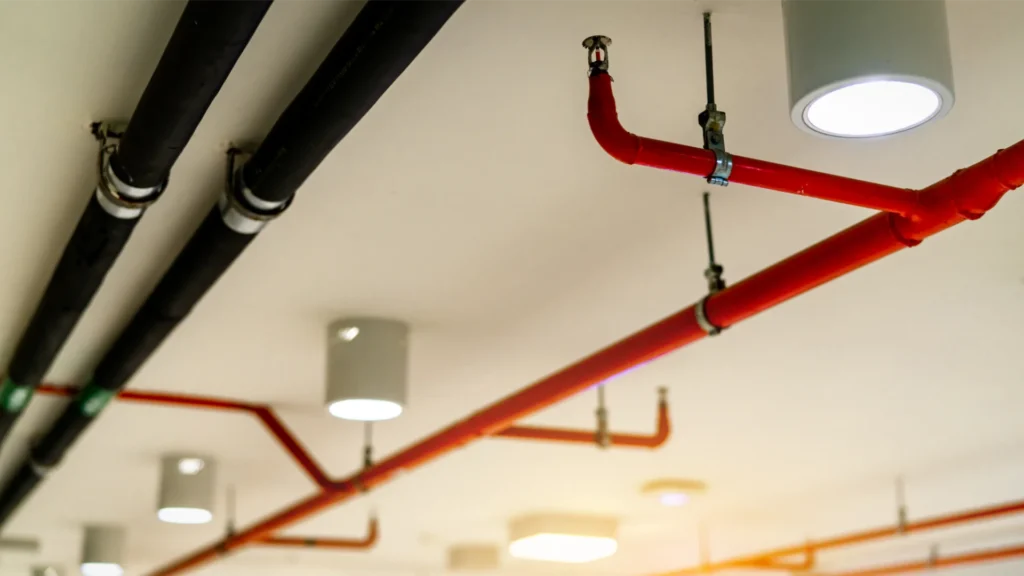Sydney fire safety is more than just checking off boxes. The heart of the program is the Annual Fire Safety Statement (AFSS) the document that not only satisfies legal requirements but also demonstrates the owner’s commitment to security and accountability. The annual Fire Safety Statement (AFSS) is the foundation of the system. It is not just a way to meet legal requirements, but also demonstrates a building owner’s commitment to safety and responsible behavior.
The reason why there is an annual Fire Safety Statement
The annual fire safety statement Sydney obligation was never intended to be paperwork just for the sake of paperwork. The fire protection systems will only be efficient if they’re maintained regularly as well as tested and certified. It may seem that a sprinkler set up ten years ago works perfectly, but it will not perform in an emergency situation because the system was not checked.

The AFSS stipulates that property owners show, at a minimum, once a year, that their security measures for fire, from alarms to hydrants, to lighting for exits, meet the original standards set by the Building Code of Australia. The AFSS is not only an inspection, it is a public declaration of the safety and durability of the building in the event of a major fire.
The Difference Between AFSS and Fire Safety Certificates
The Fire Safety Certificate and the Annual Statement are often misunderstood by property owners, yet they have different functions. The certificate is given after an important upgrade or new system is put in place. It’s a proof that new measures comply with the regulations before a building is utilized or rented. The AFSS is a later step. It’s a continuous obligation which proves that the same systems remain in compliance with the standards every year following the initial installation.
Together, they form a cycle of protection: certificates confirm that the safety systems were installed correctly as annual reports verify that the safety systems have been maintained for the duration of the building. If you fail to take care of any of these steps will break the whole chain.
The Building Owner’s Responsibility
One of the unique features of the AFSS procedure in New South Wales is that it imposes the sole responsibility on the property’s owner. The AFSS does not include any hierarchy of defects, unlike other forms where they can be classified as minor or serious. The entire document is inadmissible when even one of the measures fails.
Owners must be proactive. They must plan inspections, work with accredited practitioners, arrange repairs, and file documents with council–all while meeting strict deadlines. For strata and commercial landlords, this means that they must coordinate with each other. committees, this task includes coordinating between tenants, contractors, and insurers. This structure, while challenging it is designed to make sure that safety isn’t impaired or delayed.
The Impact of the Broader AFSS in Sydney
The AFSS goes beyond legal compliance. Tenants frequently inquire about a building’s current safety statement before deciding to lease space. In addition, insurance companies often require a copy prior to deciding on the coverage. A current Annual Fire Safety Declaration can impact the value of a property the tenant trust and even insurance rates.
Councils can be reassured that the thousands of Sydney buildings are monitored regularly. It also means that firefighters can have greater confidence in the system’s capability to function in times of crisis. This reduces risks for firefighters as well as the occupants. In essence it’s about the AFSS is not only about safeguarding individual buildings, it is also about making the city safer overall.
Conclusion: AFSS as a Standard of Trust
The annual fire safety declaration Sydney is a requirement that may appear to be a hurdle for bureaucratic reasons but, in actuality, it’s a mark of confidence. It demonstrates that fire safety measures are not put at risk. It also proves that the equipment is trustworthy and that the building owners are taking the responsibility of their residents health and well-being. This certificate, when paired with the Fire Safety Certificate completes the process of confirming the safety measures that are in place and their continual performance.
For property owners, the lesson is clear: the AFSS is more than an annual deadline. It’s an investment in security accountability, community trust and accountability. This is what makes the AFSS so valuable in Sydney’s rapidly growing urban landscape where thousands rely upon safe and compliant building.